Traditional Classrooms and Student-Centered Learning
Depending on who you talk to about kids, you might encounter two different ideas about classroom structure: the traditional model and the student-directed model. A classical school is one of many examples of the former, and a Montessori school might be an example of the latter. The basic issue comes down to this: are teachers the primary drivers of what and how a child learns, or do the child's interests dictate what is taught, and how?
Though ACA is a traditional school, this is an important topic to think about. Is there anything a traditional classical school can learn from student-centered or student-directed methods, and vice-versa?
One of the benefits of nontraditional student-centered learning, for example, is the humility it fosters in teachers. Teachers, particularly at more advanced academic levels, can easily become egotistical or self-centered. They view themselves too highly and are too easily frustrated with, or disdainful toward, their students. Student-centered learning, such as Montessori schools provide, force the teacher to constantly look outside of themselves. Teachers are attuned to the student as an individual with unique interests, and they learn to respect and foster those interests. This is a crucial skill for teachers to develop, as students learn best when they feel recognized, encouraged, and appreciated. They are humans, after all, and need love and validation.
On the flip side, a student-centered environment can be dangerous for children. While it fosters affirmation on a personal, short-term level, it may not provide some important structures that all children need. For example, when student choices are emphasized, this assumes students have a standard from which to make a good choice. Would they rather learn to spell or play with blocks? I would have rather played with blocks. Would they like to draw or memorize the multiplication table? I would have rather drawn. This thought experiment does not mean that drawing or playing with blocks are bad (they're actually good), but it does mean that poor choices can be made. For everything there is a season. Are teachers facilitating poor choices in their students by allowing student direction at inappropriate times? One of the reasons we educate our children at all is because we know they don't yet know how to make good choices. Allowing them to make repeated bad choices doesn't make them creative and independent; it just makes them even better at making more bad choices.
Another way of saying this is to think about your backyard fence. Few parents release their kids to play outside without one. With a fence in place, however, most parents do (and wisely) let their children roam at will. They head for the sandbox, find sticks, dig in the dirt, and kick the ball -- all as they please. But the fence is there the whole time. So are other rules the parents have set up: don't throw baseballs at the window, and don't pick up fat black spiders. With these structures in place, a child's freedoms get a whole lot better. They're safe, and they're following the rules life comes with. In other words, fences facilitate freedom. Without one, kids are in the street, and here comes the UPS truck driving too fast.
God made our children to love rules, and he also made parents to love their kids. So when we ask our children, "Are you making the right choices?" we should first be sure they know what the right choices are.
